Learn 7 ways to interact with your senses and your imagination.

By Alexane Roy
You can learn to interact with your senses and your imagination.
This blog is an invitation to living more peacefully and happily when taking care of people facing neurocognitive disorders. The author Alexane Roy demonstrated in her book living…LOVING in Alzheimer’s land that using our senses and our creativity with the people in need of our help is the most efficient and loving way to care.
Introduction
Nobody wants to lose a loved one to Alzheimer’s. The good news is: you don’t have to. Of course, it’s necessary to mourn the loss of some aspects of the person you used to know. It is part of the process, but there are other ways to be with them and to enjoy spending time with them. You just need to try to do things differently with the 7 efficient ways I will introduce you to.
Why is it Essential to Learn How to Use Your Senses

We generally don’t know how to reach out to a person facing neurocognitive disorders like Alzheimer’s; some people think there’s nothing we can do. I understand that if the only way they’ve tried to communicate was with words and the reasonable and logical way of thinking, then for sure, it doesn’t work.
That’s why it is essential to learn how to use your senses and your imagination in order to improve your communication and your relationship with the persons you take care of, either as a caregiver or healthcare worker. Even if you are simply a friend or a parent, this blog will help you feel better next time you go visit someone facing Alzheimer’s; plus, the person you visit will probably feel much better too.
Gaining the Person’s Trust
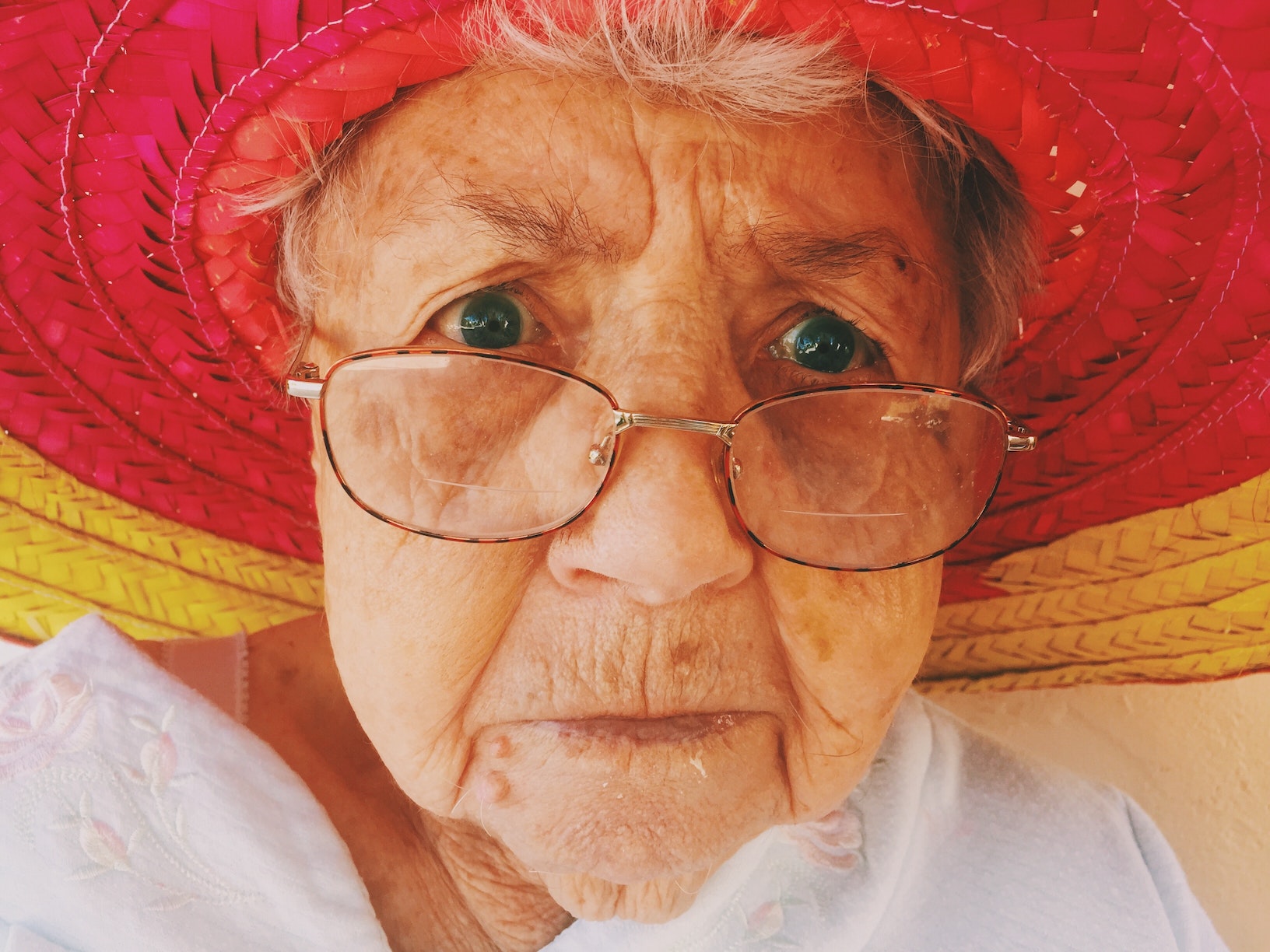
Sadly, I’ve heard people at funerals say: my mom died 10 years ago when she was diagnosed with Alzheimer’s. It is too late for them, but if you are willing to try new things, I assure you, you can succeed. You might have to practice a few times before gaining the person’s trust, especially if you’ve been interacting the “reasonable and logical way” for a long time, but I am positive, you will be able to improve.
I am also 100% sure, as Oprah would say, that you will gain some peace of mind when you feel that connection again while using your senses and your imagination. It might look like a simple thing to do, but unfortunately, in our modern societies, feeling, imagining and using our intuitive way of thinking are not taught in schools, nor used at work, in most cases. So, we need to re-train the brain and the body to interact in a new and natural way. It might take some patience.
The Unexpected is the Plan

Alzheimer’s land is not a place where we can expect to follow a plan with a neat schedule. Be ready for the unexpected, sometimes fun, sometimes challenging. Your first plan should only be to try one or two or more of the 7 essential ways to connect and observe how the person reacts. Afterwards, it’s a good idea to jot down how it went in a personal journal. You will be able to compare, from one time to the next what works best for you and the person you are caring for.
The 7 Essentials to Communicate in Alzheimer’s Land
Next time you meet with a person facing Alzheimer’s disease, I invite you to try out these 7 efficient ways to communicate, one at a time, but before you do so, it is important to remember to trust your instinct and be open to changing the plan. By observing the person’s body language, you will be able to know if it’s time for a calm activity or if it’s better to go walking or get excited with a rock and roll song. In order to observe somebody, you first need to connect with yourself by breathing deeply a few times; and then off you go with courage and confidence!
1. Eye Contact
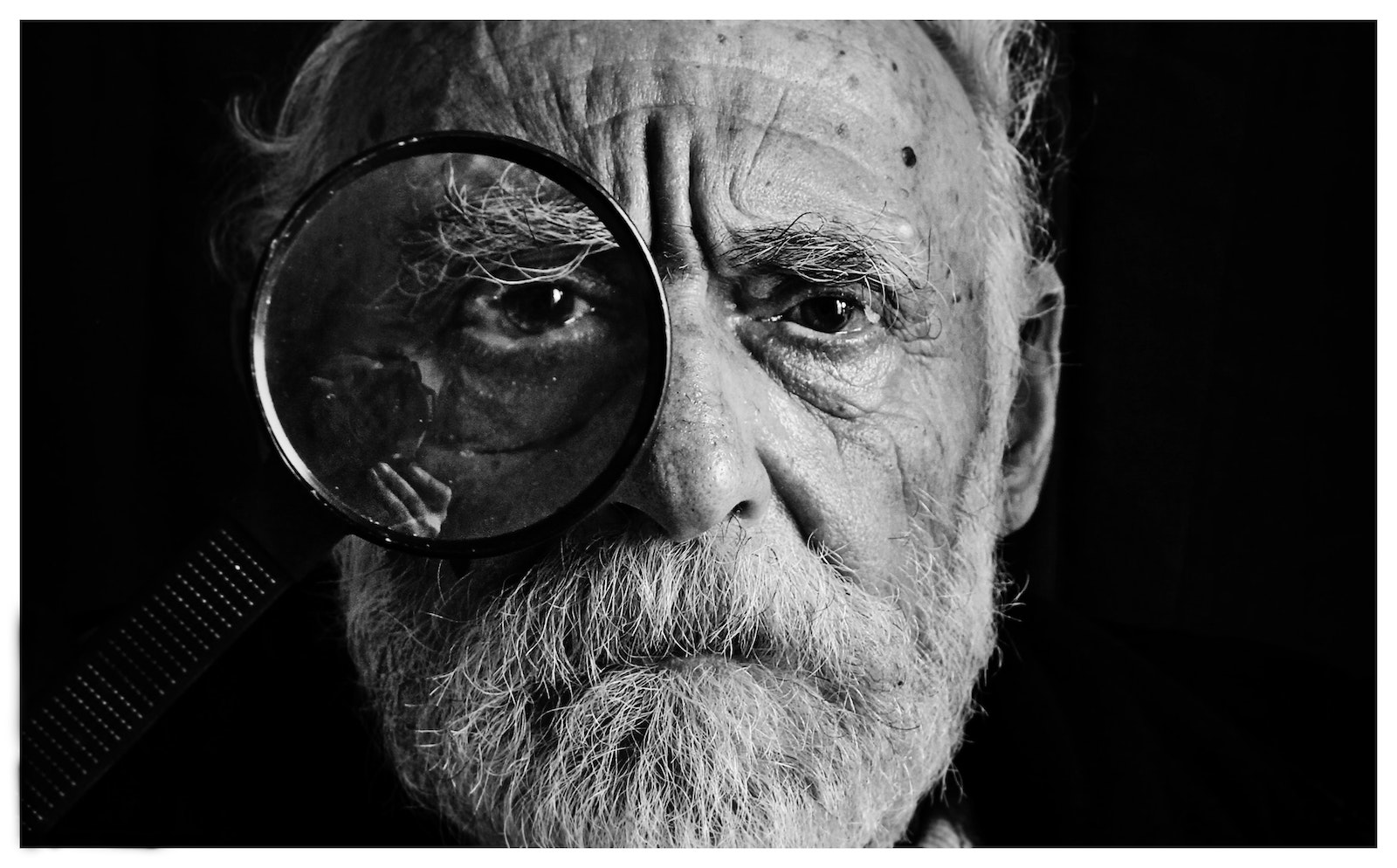
So many times, I have seen people get frustrated with Alzheimer’s patients because they weren’t doing what they were told to do or they weren’t answering the questions asked. In each case, the caregiver or healthcare worker was not engaging through eye contact.
If you only use your voice and have not made eye contact, you probably won’t get any response, and that’s normal because perception is affected by cognitive disease. This means that the persons facing Alzheimer’s might not see you even if you are there in front of them. Needless to say, they might not hear you either.
What is Perception?
When I was at McGill university studying psychology, I had a class called PERCEPTION, and it was amazing how much I learned. Most of us are familiar with optical illusions; well, all our senses can be tricked like that. That’s perception. There is a thing there, but some people see it one way, some others see it differently. We can even see one thing two different ways depending where our eyes are staring.
Perception doesn’t only trick our eyes. I remember, a few years ago, watching waterfalls and wondering how it was possible for my ear to perceive different sounds. If I was watching the whole picture, I heard a continuous “sch”, but if I focused on a drop of water falling down, and then another, and another, I could hear discontinuous water sounds.
All this to say that perception has little to do with the health of our ears or eyes or taste buds. It has to do with brain connections, so make sure the persons in need of your care perceive you, because sometimes they can be looking at you but are actually looking through you. A smile will often tell you if the person has perceived you or not.
2. Smile

If you smile, once you have made eye contact, usually the person will smile back. That’s a good sign of connection. If you don’t get a response, go on to the next essential step: touch; make sure you don’t go too fast because you might startle the person you want to help. Unfortunately, I’ve seen that happen many times. It takes more time for their brain to process information.
3. Slower Body Moves
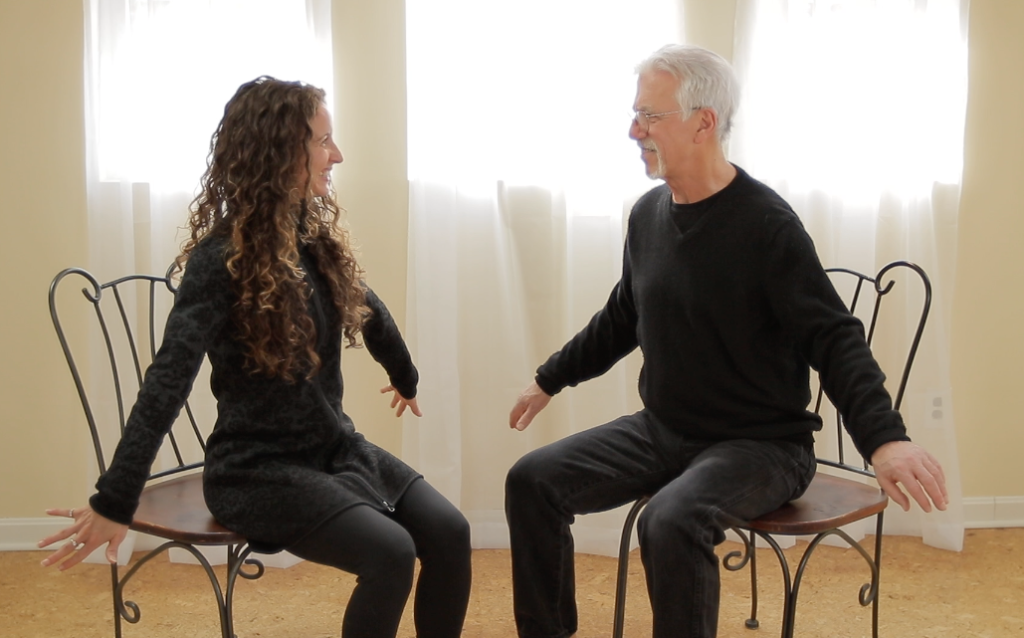
Avoiding exaggeration because it might be perceived as unnatural, we need to move more slowly than usual. Remembering to breathe in and out in a calm manner will help you find the right pace for each situation. Once contact is made, then you can dance and get excited, but first, make sure you are perceived, slowly, especially if you need to touch a person’s arm in order to get their attention. When an individual is sleeping or unaware of your presence, it is important to move deliberately. Take your time.
4. Touch
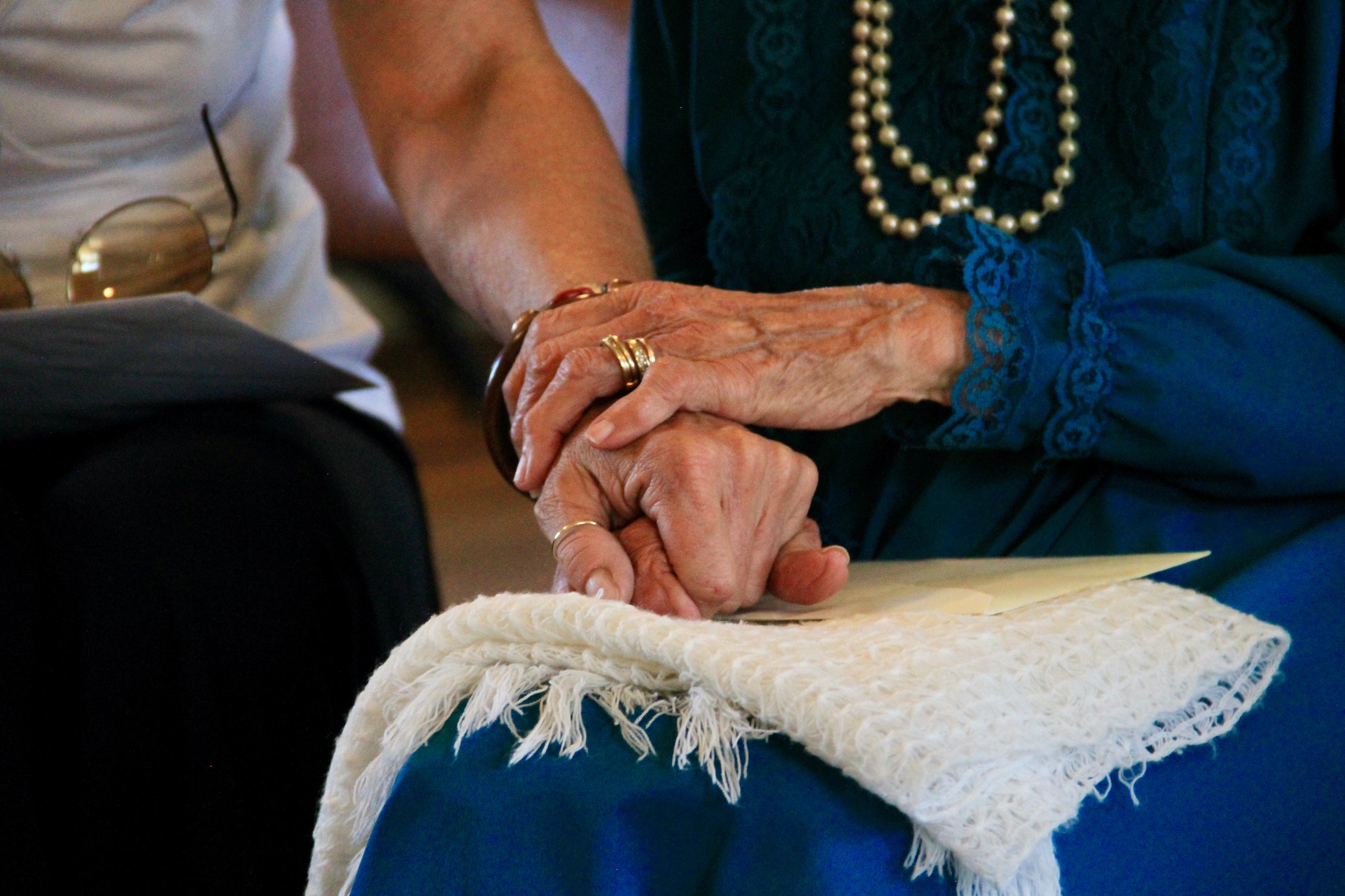
I always recommend touching the outer and upper side of the arm first. That part of the body is not as sensitive as the inner part of the arm or leg and is not associated with intimacy like the hands can be. If people don’t recognize you at first, they could be disturbed by your presence, so keep a safe distance while touching their upper arm. Don’t put your face too close to theirs and wait before saying anything or just say hello, calmly.
5. Few Words and Even Fewer Questions

Silence is golden, but for some of us, it is the hardest thing to tolerate. I can’t insist enough, you need to develop your capacity for just being with the person in silence. It’s a beautiful gift you can give yourself. Out of silence often come poetry, loving words, feelings of safety and more. If you can’t tolerate silence, put on a song, not just music playing in the background. Play one song or a piece of music that you know the person likes, and that you enjoy as well. You can offer your hands to hold. Please don’t take them without asking with your eyes and with just one word or two if necessary. Less is more in Alzheimer’s land.
6. Music, Dance or Singing
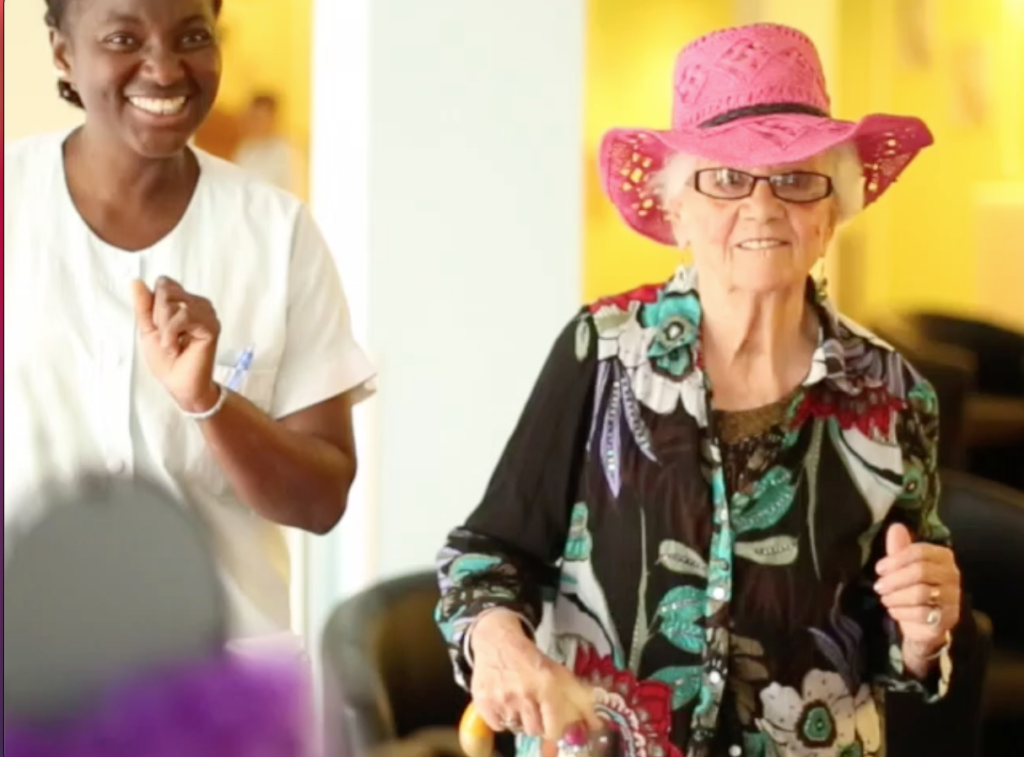
Music is a powerful tool for the brain. It stimulates the areas where language is processed, where movement is triggered and where emotions are expressed. You can do a lot with one song, if you take the time to listen to it WITH the person in need of your care and create a bond dancing or singing together; you can also just hold hands.
7. Accept What Is
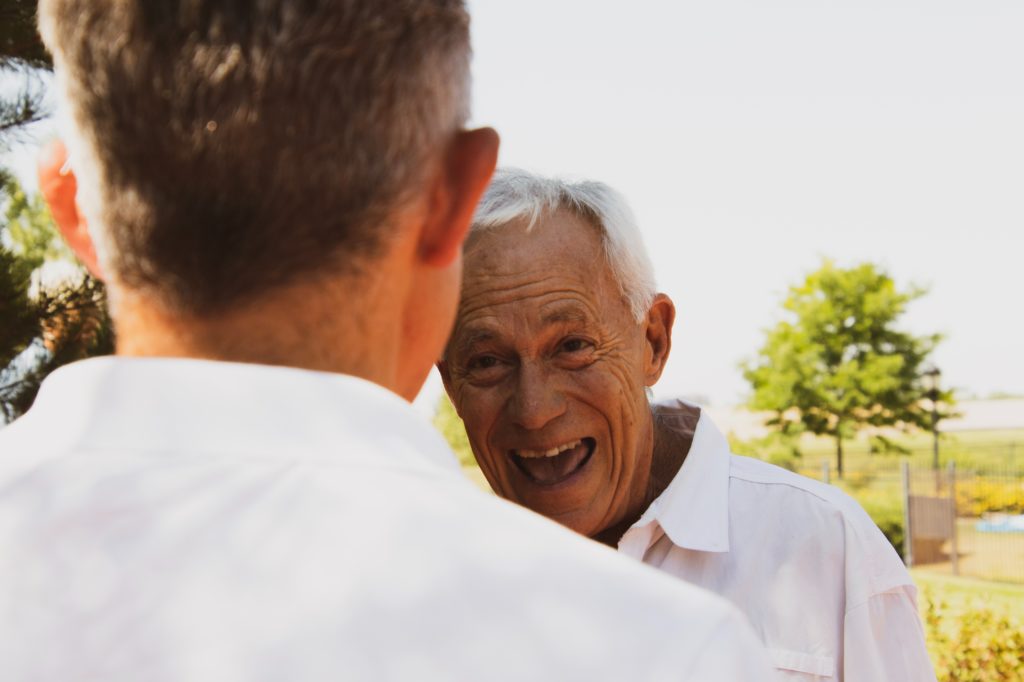
If nothing works? It can happen. Go home. Take a bath or any other thing that makes you feel good again and remember, sometimes, it doesn’t work. That’s what dementia is. It is unexpected. It is a challenge. And when you regain your courage, go back and try again.
Conclusion
It is essential for all human beings to get attention and acknowledgment for who they are. People facing dementia are still people with feelings and needs even if some of them don’t talk much anymore, or not at all. Interacting with them can be a challenge, but it can also be a gift you give yourself when you open up to this “sensory way of engaging”. Being able to look at each other in the eye and smile is the basis for any trustworthy and safe relationship. In that simple gesture so many people forget to do, we can feel connected, loved and respected.
Three Recommended films to use to improve communication using Memory Lane Tv. With each film, you can pause the film at any time and engage with the viewer.
- Film 1: Try a sample on watchmemorylane.com
- Film 2: Try our Series Yoga with Jessica
- Film 3: Try our Medley Series
Additional Resources
If you want to share your experiences or if you have any questions, please write to info@alexaneroy.comor learn more about Alexane Roy.
And if you’d like to explore more of these tips, here’s a link to Alexane Roy’s ebook: living, LOVING in Alzheimer’s land as well as tutorial videos on Facebook.
Keyword: Alzheimer’s, caregiver, healthcare worker, dementia, aging, neurocognitive disease, care, caring, taking care.
Keyword MSV: multi sensory experience, care television, multi sensory stimulation, how to help someone with memory loss, sensory activities for dementia patients, care plan for dementia, coping with memory loss, relaxing videos, memory stimulation, how to help someone with dementia, living with dementia, dementia care plan, dealing with dementia, soothing videos